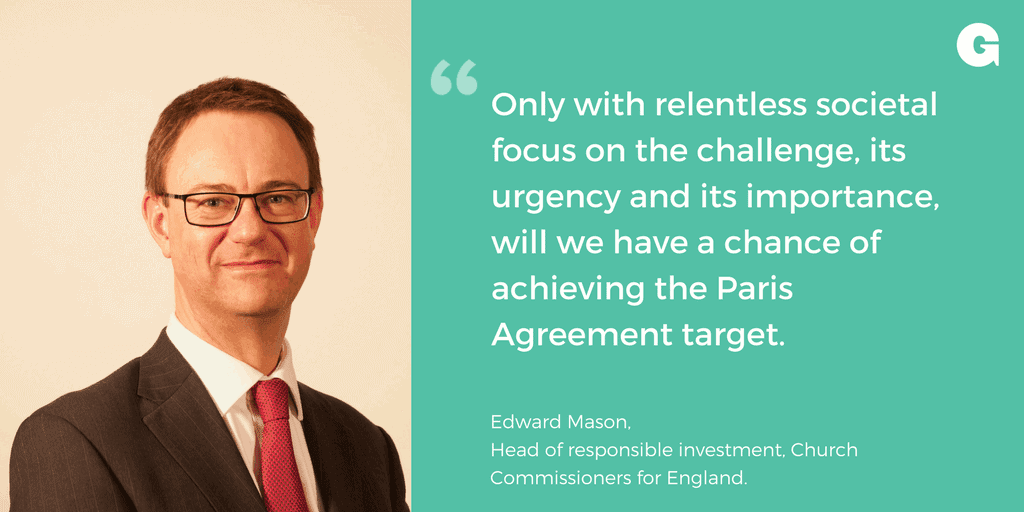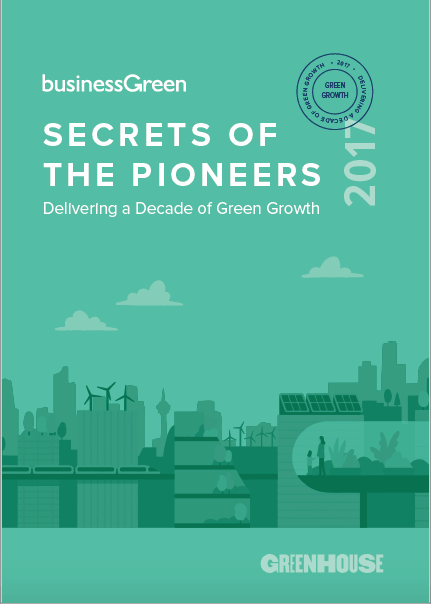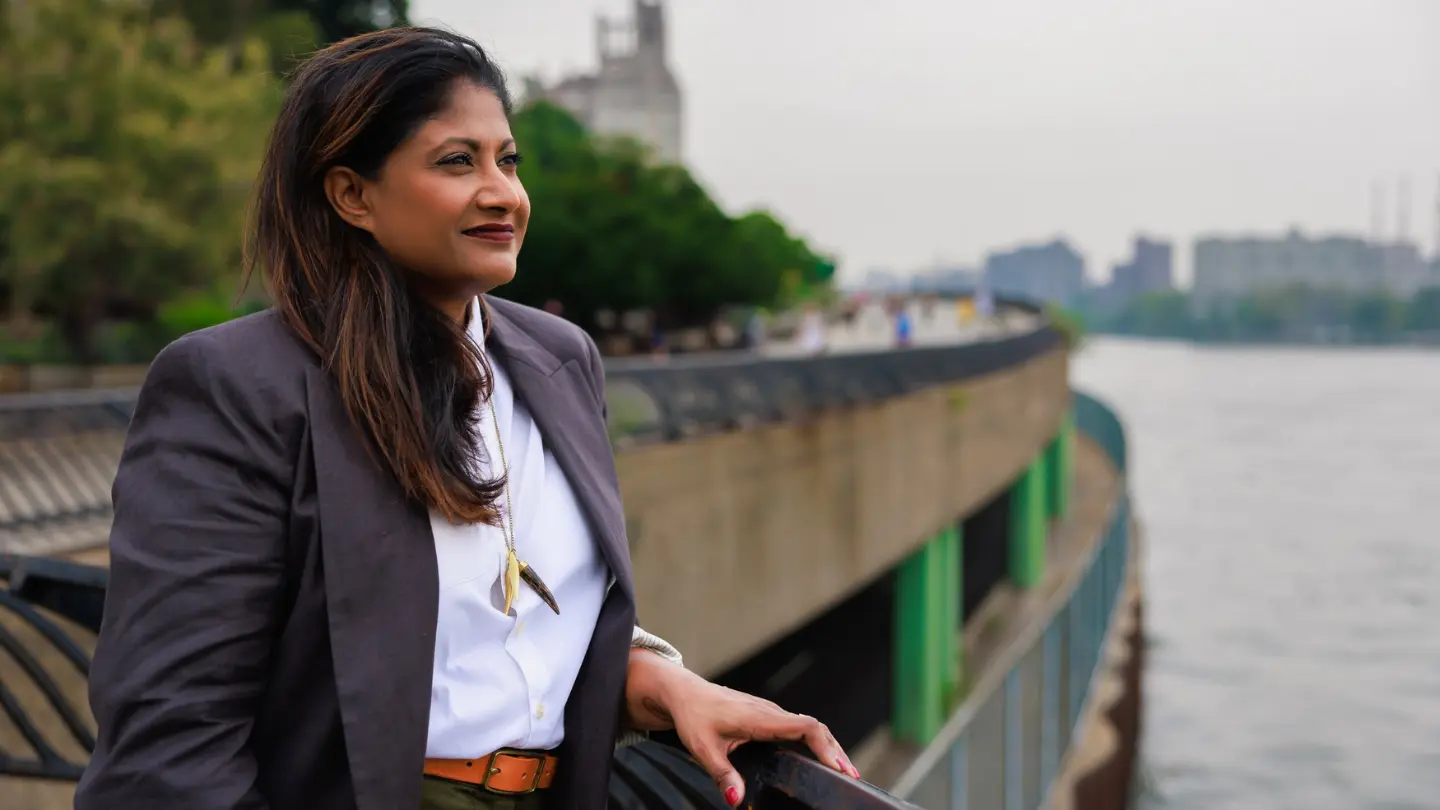Secrets of the Pioneers: Edward Mason

We speak Edward Mason, head of responsible investment at Church Commissioners for England. He is tasked with ensuring the church implements its ethical and responsible investment commitments.
The interview is part of a series for a report, Secrets of Pioneers, Delivering a Decade of Green Growth, which was launched at the BusinessGreen Leaders’ Summit on 9th November 2017.
Edward took up his current position in August 2014, having previously served for five years as Secretary of the Church of England Ethical Investment Advisory Group (EIAG). Prior to working at the Church of England he served for 15 years as a British diplomat, leaving in 2005 to help establish the diplomatic advisory group Independent Diplomat.
How would you describe the journey of green finance over the last decade? Has it finally hit the mainstream?
It depends what you mean by green finance. There’s the greening of finance generally and the creation of specific investment vehicles to fund green investments.
There have been very significant steps forward in making environmental issues part of investment decision-making over the last decade. For example, the 62 per cent vote last year for better climate change related disclosure by ExxonMobil was embraced by the world’s largest asset managers. Sustainability-focused and low carbon investment products are increasingly popular with institutional investors. And investors have a growing voice on sustainability and climate policy with the pre-Paris Global Investor Statement on Climate Change. This was signed by investors representing more than $24 trillion in assets.
But we are a long way from sustainability considerations being fully integrated into our economic, business and investment models. There is plenty more work to do.
This is as much, or more, a challenge for policy makers as investors. Investors make their decisions based on their fiduciary responsibilities and risk/return criteria. Sustainable investments can stand up in their own terms but so can unsustainable investments, and public policy is the most effective way to get environmental damage priced in and to create the right economic incentives so that capital naturally flows at the scale required to sustainable rather than environmentally myopic investments.
What is the most important lesson you have learned over the past 10 years?
Asset owners matter. When it comes to sustainability, in the long term, we’ve nowhere to hide because our returns are dependent on the health of the economic system as a whole. While companies are focused on keeping their businesses profitable, politicians on winning the next election, and asset managers on keeping their mandates and staying in the best buy tables, asset owners have a requirement to be able to generate returns long into the future.
Asset owners are increasingly using their voice. When we do, and particularly when we work together, we can have a sizable impact, both directly on companies and policy makers and indirectly by spurring action by asset managers who control huge amounts of capital.
What impact will the Taskforce for Climate-related Financial Disclosure (TCFD) recommendations have on the mainstream investor community’s attitude to climate risk?
The recommendations have given additional profile to the issue of climate risk and its potential financial materiality. My sense is they have been received most enthusiastically by those investors already concerned about climate risk.
It is particularly significant BlackRock were involved in the Taskforce and will be advocating the implementation of the TCFD’s recommendations in their engagement with companies. Uptake does not get more mainstream than that.
The key benefit of the TCFD report is it gives a common disclosure agenda around which investors can unite, and it will not require many large players pushing for implementation for companies to conclude that they need to act. The recommendations are also a disclosure agenda around which regulators can unite, and if they do, uptake will be faster and more widespread.

What is your vision for the green economy in 10 years’ time and what do we need to get us there?
In 10 years’ time, I hope to see us long past the peaking of carbon emissions and a clear downward trend established. I’d like it to be normal practice to integrate sustainability considerations into business strategy. Companies that do not do this should be punished or at the very least challenged by the markets. I want to see technological innovation making the sustainable choice the rational economic choice, indeed giving us a range of sustainable choices for our many environmental challenges.
To get there we need a relentless focus on climate change and sustainability from citizens, NGOs, the media, asset owners, asset managers and businesses – which will keep politicians focused too. We need innovation and investment in it from businesses, governments and foundations. We need all that is best in the human spirit.
What top three sustainability challenges will be top of the agenda in 2027? How will investors contribute to tackling them?
Water stress. Climate change. Air pollution.
These are huge challenges, which investors will need to contribute to tackling through their function of investing with a view to achieving their required risk-adjusted returns – just as businesses will need to contribute by investing with a view to achieving their desired return on capital and earnings growth.
While investors can do a lot, if the numbers don’t stack up the market economy cannot solve environmental and social problems. It is society’s job collectively to make sure the numbers stack up.
If you could invest in one clean technology through to 2027 which would it be and why?
Batteries. Battery technology is vital to the low carbon economy – for the grid, for electric vehicles, for heavier transport. As batteries become cheaper, more powerful, lighter, smaller, easier and quicker to charge, and safer, the better served we will be – the commercial opportunity is huge.
What kind of world would you like to be living in in 2027?
One where I’m confident about the future for my children and for the poor and vulnerable in developing countries.
Do you think we will be on course to limit warming to two degrees?
I think it is the consensus view that we are not on course to limit warming to two degrees and that getting us on course looks extremely challenging. It is only with the relentless societal focus on the challenge, its urgency and its importance, as I mentioned earlier, that we will have a chance of achieving the Paris Agreement target. This is everyone’s responsibility, and the more influence we have, the more responsibility we have to use it.

This interview is one of more than 20 which make up a report, Secrets of the Pioneers: Delivering a Decade of Green Growth, published on 9th November at the BusinessGreen Leaders’ Summit.
We have already featured interviews with many other leaders from the sector, including Christiana Figueres, former executive secretary of the United Nations Framework Convention on Climate Change, Mike Barry, director of sustainable business at Marks & Spencer, and climate scientist Dr Emily Shuckburgh. These interviews and many others are available on the blog.
This year marks the 10th anniversary of both BusinessGreen and Greenhouse PR, the specialist communications agency which supports businesses, entrepreneurs and campaigners working to create a green economy.
At Greenhouse, we support a wide variety of organisations pioneering new standards of sustainability across multiple sectors. Whether it’s fashion, finance or farming, we’re always on the look-out for new opportunities to reach our clients’ target audiences. If you’ve got a great story and need our help to tell it, we’d love to hear from you.


